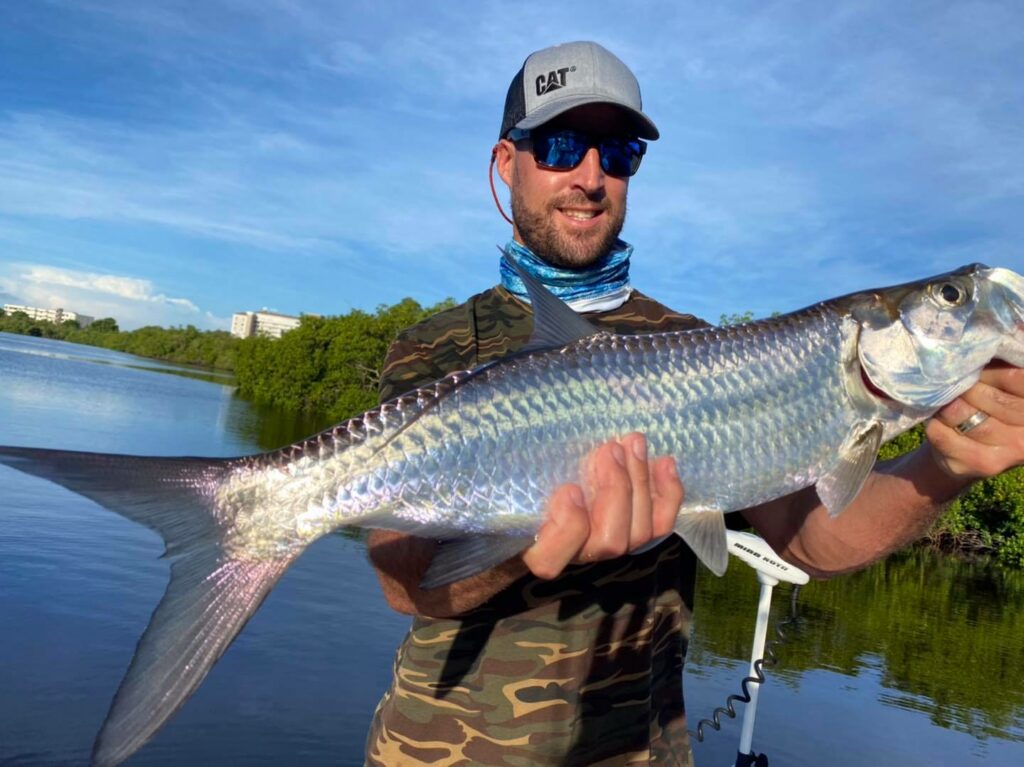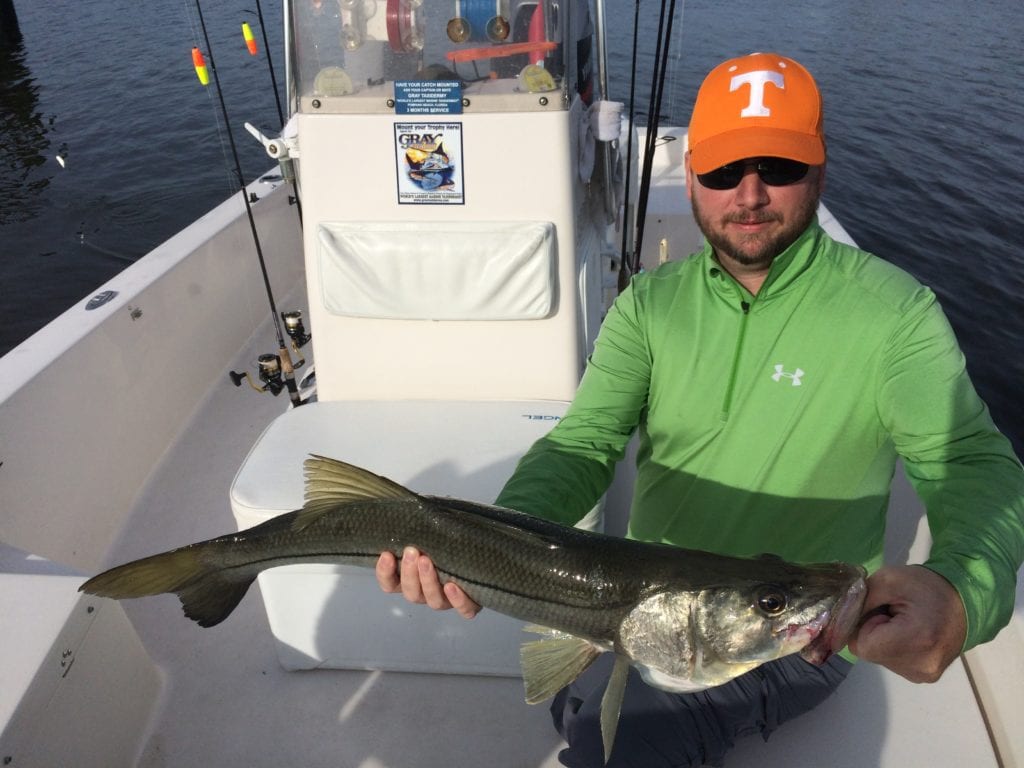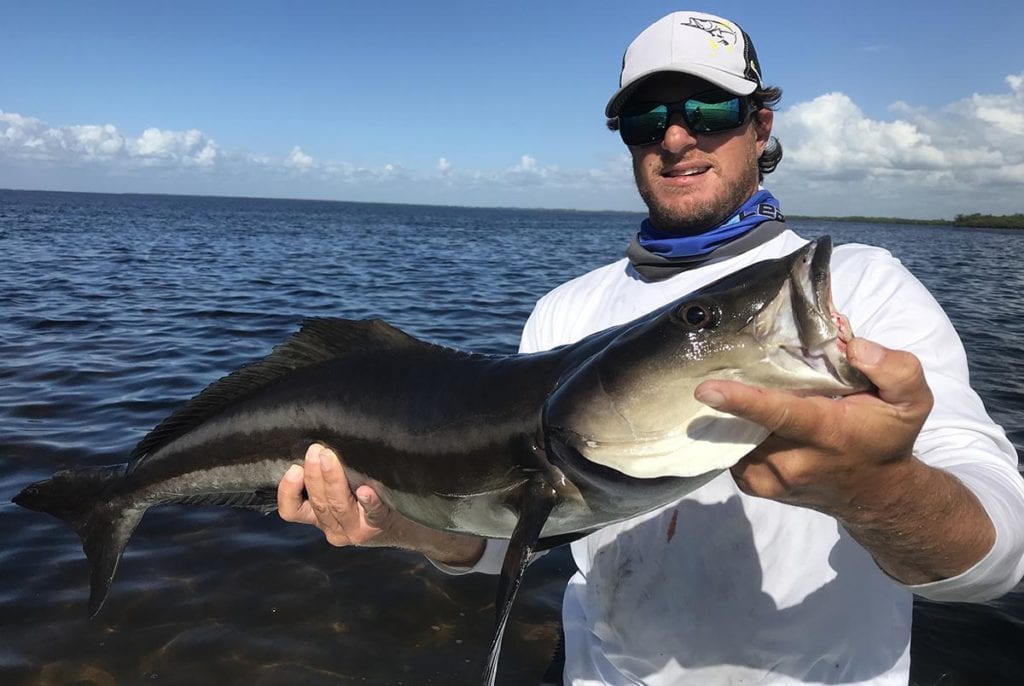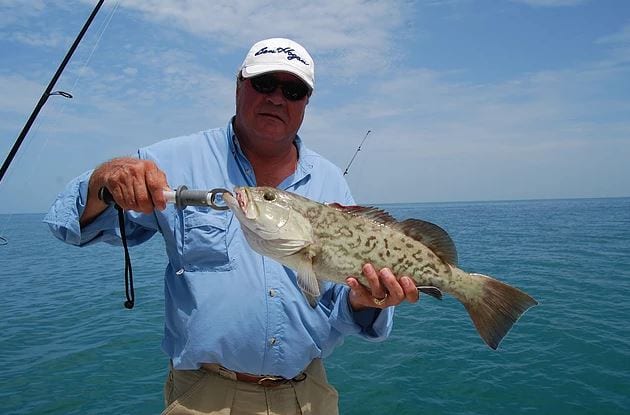
The Everglades is one of the most diverse and productive fisheries in the world, offering year-round action for fishermen targeting a variety of species. Whether you’re an experienced angler or a beginner looking to get started, this guide will provide detailed information on fishing the Everglades, covering essential techniques, locations, and species behavior across different seasons and fishing environments. This guide does not just tell you when fish are available; it explains how to catch them, where to find them, and how conditions influence their activity.
Understanding the Everglades Ecosystem
The Everglades consists of an intricate network of mangrove forests, tidal creeks, seagrass flats, oyster bars, and deeper offshore waters. The region is defined by slow-moving freshwater from Lake Okeechobee mixing with saltwater from the Gulf of Mexico, creating a massive estuarine system teeming with life. Water levels fluctuate with seasonal rainfall and tidal influence, meaning that fish movements are constantly shifting. Understanding this ecosystem is key to being a successful fisherman.

Essential Gear and Bait for Everglades Fishing
Before hitting the water, it’s important to have the right equipment for the species and environments you plan to fish.
- Rod and Reel Selection: A 7’ medium-light spinning rod is ideal for inshore fishing. For nearshore and offshore species, a heavier setup such as a 7’-8’ medium-heavy rod with a 5000+ size reel is recommended. Offshore fishermen targeting grouper and snapper will need conventional reels with high drag capacity.
- Line and Leader: Inshore fishing calls for 10-20 lb braided mainline with a 20-30 lb fluorocarbon leader. Nearshore fishing typically requires 30-50 lb braid with a 40-60 lb leader, while offshore setups may use 50-80 lb mainline with 60-100 lb fluorocarbon leader.
- Bait Options: Live bait such as shrimp, pilchards, mullet, and crabs are highly effective across all environments. Artificial lures like soft plastics, topwater plugs, and jigs mimic natural prey and are great alternatives when live bait is scarce.
Fishing the Everglades by Environment
Inshore Fishing: Backwaters, Creeks, and Flats
Inshore fishing covers estuarine waters filled with mangroves, oyster bars, and seagrass beds. This is where many predatory fish hunt, making it a top spot for beginners and experienced fishermen alike.
- Target Species: Snook, redfish, spotted seatrout, tarpon, sheepshead, black drum, and mangrove snapper.
- Key Techniques:
- Sight fishing for redfish in clear, shallow waters using soft plastics on a jig head.
- Casting live shrimp under mangroves for snook during incoming tides.
- Drifting over seagrass flats while bouncing artificial shrimp for spotted seatrout.
- Best Locations:
- Muddy-bottom creeks and deep mangrove pockets hold snook in cold weather.
- Tailing redfish are common on grass flats during low light hours.
- Oyster bars and docks attract black drum and sheepshead, particularly in winter.
Nearshore Fishing: Reefs, Wrecks, and Passes
Nearshore waters provide access to larger game fish while still being manageable for fishermen in smaller boats. Strong tidal currents, submerged structure, and baitfish schools define these areas.
- Target Species: Spanish mackerel, tripletail, pompano, cobia, permit, and kingfish.
- Key Techniques:
- Sight fishing for tripletail near crab trap buoys using live shrimp.
- Slow-trolling live pilchards or cigar minnows for kingfish.
- Using jigs tipped with shrimp to catch pompano in sandy-bottom passes.
- Best Locations:
- Reef edges and wrecks for cobia, permit, and kingfish.
- Channel markers and floating debris for tripletail.
- Tidal sandbars where pompano congregate to feed.
Offshore Fishing: Deep Wrecks and Ledges
Offshore fishing in the Everglades provides access to some of the Gulf’s most productive waters. These deep waters are home to larger fish that require specialized tackle and techniques.
- Target Species: Grouper, snapper, blackfin tuna, mahi-mahi, wahoo.
- Key Techniques:
- Deep dropping cut bait for grouper and snapper near ledges.
- Trolling rigged ballyhoo or diving plugs for wahoo and mahi-mahi.
- Chumming and chunking to bring blackfin tuna up to the surface.
- Best Locations:
- Artificial reefs and deep wrecks hold resident grouper and snapper year-round.
- Temperature breaks and weed lines offshore attract mahi-mahi and wahoo.
- Ledges and current rips where tuna actively feed on baitfish.
Fishing the Everglades by Season
Winter (December – February)
Winter brings cooler temperatures that push fish into deeper, warmer waters. Snook, which are highly temperature-sensitive, retreat into deeper channels, backwater creeks, and residential canals where they can find warmth. Targeting them requires slow-moving live bait like shrimp, pinfish, or finger mullet, and artificial lures such as soft plastics on a jighead or slow-rolled swimbaits.
Redfish remain active throughout the colder months, often congregating in large schools over muddy bottoms that retain heat. Sight-fishing for redfish in shallow water is productive on clear days when the fish bask in the sun. Sheepshead and black drum become primary targets around docks, oyster bars, and mangrove roots, feeding aggressively on crustaceans like shrimp and fiddler crabs. Seatrout, another staple of winter fishing, hold over deep grass flats, striking soft plastics and shrimp-tipped jigs.
Offshore, kingfish migrate south along the Gulf Coast, providing excellent trolling opportunities. Grouper fishing peaks in winter, with gag and red grouper holding over deep structure in 50-150 feet of water. Snapper fishing remains strong, with mangrove, yellowtail, and mutton snapper found on wrecks and reefs.
Spring (March – May)
As temperatures rise, fish become more active, and spring brings some of the most productive fishing of the year. Snook move from their winter hideouts and aggressively feed in preparation for the summer spawn. This is the best time to target them with live pilchards, threadfin herring, or topwater plugs during early mornings and late afternoons.
Redfish can be found tailing in shallow water, especially in the early mornings on low tides. Their feeding activity increases, making sight-fishing with gold spoons, soft plastics, or live shrimp highly effective. Spotted seatrout gather in large numbers over grassy flats and deeper potholes, readily striking soft plastics, topwater lures, and live bait.
Tarpon begin showing up in greater numbers, especially near river mouths, beaches, and backcountry bays. They actively feed on mullet, crabs, and shrimp, and fly fishing for tarpon also becomes a viable technique during this time.
Nearshore, cobia migrate along the coast, often trailing stingrays and sea turtles. Sight-fishing for cobia is highly productive, with bucktail jigs and live bait being the top choices. Permit also begin to show up on nearshore wrecks and reefs, where they can be caught using live crabs.
Offshore, mahi-mahi and wahoo become more prevalent along weed lines and current edges. Blackfin tuna action heats up, especially when chumming over deep wrecks and ledges. Grouper and snapper fishing remains excellent as fish move into slightly shallower waters.
Summer (June – August)
The heat of summer drives many species to deeper waters during midday, making dawn and dusk the best times to fish. Snook enter their peak spawning season and are found in large numbers around passes, beaches, and deep cuts. Live bait such as pilchards, threadfin herring, and croakers work best for big spawning snook.
Tarpon fishing reaches its peak, with large schools migrating along the beaches and into inlets. Fishermen target them using live crabs, mullet, and large swimbaits. Battles with tarpon during this time can last for over an hour, making them one of the most exciting fish to catch in the Everglades.
Permit fishing is at its best, with large schools congregating over offshore wrecks. Sight-fishing for permit with live crabs or shrimp is the most effective method. Nearshore waters also see increased shark activity, with blacktip, bull, and hammerhead sharks providing intense fights for fishermen.
Offshore, mahi-mahi fishing is in full swing, with large fish patrolling floating debris and weed lines. Blackfin tuna remain steady, especially early in the morning around offshore wrecks and ledges. Grouper fishing slows slightly in shallower depths but remains strong in deeper water. Snapper fishing is excellent, with mutton and yellowtail snapper providing steady action over reefs.
Fall (September – November)
As temperatures cool and baitfish flood the Everglades, fish enter a heavy feeding phase. This is one of the best times to fish, as many species aggressively eat to prepare for the colder months ahead.
Snook move back into the backcountry, staging near mangroves, creeks, and river mouths. They remain highly active, making them easier to catch with live bait and artificial lures. Redfish fishing is at its peak, with large schools forming in the shallows. This is the best time to catch oversized bull reds as they prepare for their annual spawn.
Seatrout fishing remains excellent, with fish aggressively feeding on baitfish over grass flats. Black drum and sheepshead begin increasing in numbers, setting up around structure and deeper holes.
Nearshore, kingfish begin migrating south again, creating fantastic trolling opportunities. Spanish mackerel return in massive numbers, often schooling near passes and beaches. Cobia make another push through nearshore waters, giving fishermen a second chance at these powerful fish.
Offshore, grouper and snapper fishing ramps up again as fish move into shallower depths to feed before winter. Wahoo fishing picks up offshore, while blackfin tuna remain a reliable target near deep wrecks and ledges.
Fall provides some of the best action of the year, with cooling temperatures and abundant bait making fish highly aggressive. Fishermen looking for fast-paced action will find plenty of opportunities before winter sets in.
Advanced Fishing Tips and Strategies
- Understanding Tidal Influence: Moving water is crucial for many species. Plan trips around high and low tides for peak feeding windows.
- Matching the Hatch: Observe what baitfish are present and use similar lures or bait to increase success.
- Using Electronics: Side-scan sonar and GPS mapping help locate structure holding fish, particularly offshore.
- Weather Considerations: Wind direction and barometric pressure changes affect fish behavior. Stable conditions often lead to better bites.
Mastering Everglades Fishing and Planning Your Next Trip
The Everglades is one of the most rewarding and diverse fisheries in the world, offering endless opportunities for fishermen of all experience levels. Success in these waters comes from understanding the seasonal patterns, the habits of key species, and the techniques that work best in each environment. Whether fishing the backwaters for snook, sight-casting to redfish, or heading offshore for grouper and snapper, the Everglades provides an unmatched experience for those willing to learn and adapt.
A great fishing trip isn’t just about catching fish—it’s about gaining knowledge, building confidence, and enjoying the natural beauty of Southwest Florida’s waters. That’s where having an expert guide makes all the difference. Chasin’ Tales offers guided inshore, nearshore, and offshore fishing charters in Naples, Marco Island, Estero Bay, and the Everglades, providing a patient, knowledgeable approach that ensures every fisherman, from novice to expert, has a great time on the water.
Whether you’re looking to refine your skills, learn new techniques, or simply enjoy a great day on the water, having an experienced guide can make all the difference. Chasin’ Tales offers personalized charters tailored to your experience level and goals, ensuring a rewarding and action-packed fishing adventure.
Don’t miss out on the incredible fishing opportunities that Southwest Florida has to offer—book your trip today and experience the Everglades like never before!




